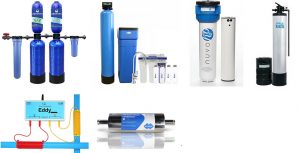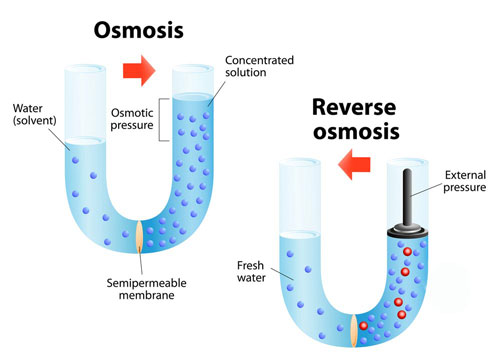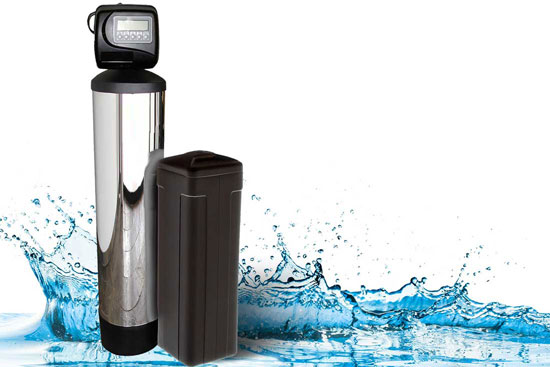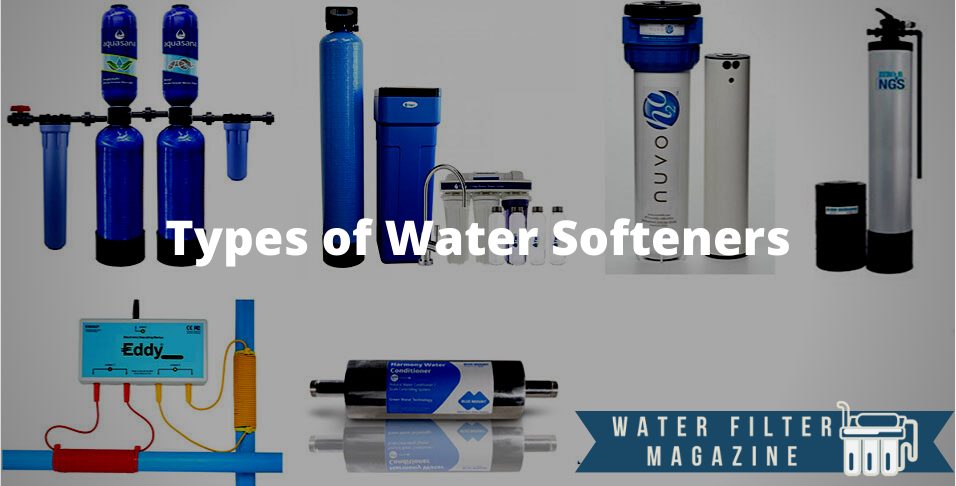 A type of water softener is a system that changes the structure of the water, removing or neutralizing the minerals from the water. Water softeners use ionization and filtration in order to improve the hardness of the water. There are 6 different types of water softeners, each with its working principle.
A type of water softener is a system that changes the structure of the water, removing or neutralizing the minerals from the water. Water softeners use ionization and filtration in order to improve the hardness of the water. There are 6 different types of water softeners, each with its working principle.
The differences between different water softener types are in the way they work. Some water softeners work through the process of mineral removal and ionization. Other water softeners work by conditioning the minerals. Some water softeners filter the contaminants out altogether.
Water softener costs differ based on the water softener type and size. On average, water softeners cost between $200 and $800. The least expensive is the showerhead water softener, at $100 for a quality product. Reverse osmosis softeners are often the most expensive, at around $1800 for a good model.
The oldest water softener types are the salt-based water softening systems, which use the ionization process. The newest water softener types are the reverse osmosis softeners, which remove the contaminants from the water altogether.
The types of water softeners are listed below:
- Salt-Free Water Softener
- Ion Exchange (Salt-based) Softener
- Magnetic Softeners
- Reverse Osmosis Softeners
- Portable Water Softeners
- Showerhead Water Softeners
1. Salt-Free Water Softener
A salt-free water softener is a device that does not use regular sodium but instead uses a potassium-chloride substitute for salt. A salt-free water softener is often referred to as a water “conditioner.” Unlike salt-based water softeners that pull out the minerals and release “softer” ions in their stead, salt-free water softeners use a catalytic media. So, rather than substituting, the salt-free water softener coats, or “conditions”, the mineral so that it does not stick to the surface.
A great advantage of salt-free water softeners is that they are among the least expensive options. Salt-free water softeners can soften the water without adding chemicals to it, making it good for drinking. This also helps save money on the bills, as it does not lead to wastewater. Salt-free water softeners also allow the minerals to remain in the water so that users may reap their drinking benefits. The disadvantage of salt-free water softeners is that, while the contaminants are “conditioned,” they won’t be removed from the water. The contaminants won’t be able to stick to your fixtures, as they are “conditioned,” but there will still be buildup.
A salt-free water softener costs between $800 and $4000 to have installed. This will depend on the purchased brand, as well as whether a professional is hired to install the system or not. If they choose to install the salt-free water softener themselves, homeowners may get the lowest price. When replacing an old salt-free water softener, it should take less than an hour to have it installed. When installed from scratch, the process may take anything from two to three hours. Salt-free water softeners are easier to install by the average homeowner, as they have fewer connections and are easier to deal with. Homeowners may still want to have a fair bit of plumbing knowledge.
The average lifespan of the salt-free water softener is between 10 and 15 years. Its longevity will depend on whether it is installed and maintained properly or not. By using the salt-free water softener together with a whole-house water filter, it may improve the longevity of the filter. The salt-free water softening process takes place through Template Assisted Crystallization (TAC), meaning that there will be no chemicals used in the process. There is also no wastewater, as the particles are technically not removed from the water; just slightly changed.
The Aquasana whole-house water filter system uses a SimplySoft salt-free softening system. Along with Aquasana, APEC also produces popular salt-free water softening systems and descalers.
2. Ion-Exchange (Salt-Based) Water Softener
The ion-exchange water softener is a softener that uses a resin bed that was negatively charged. This negative charge will attract and then remove the calcium and magnesium from the water. Unlike salt-free water softeners that transform rather than remove, ion-exchange water softeners will use salt in order to clean the softener and regenerate the bed of resin. Once regenerated, the sodium ions that were positively charged will go into the water, replacing the calcium and magnesium. Then, the hard wastewater will be flushed down the drain.
The advantage of ion-exchange water softeners is that, rather than “conditioning,” they will completely remove the minerals from the water. The removed minerals will be pulled into the resin bed, where they will be swapped into sodium through the process of ionization. The main disadvantage of salt-based water softeners is that they are banned through a majority of cities and states because of the negative effects they have on the soil and agriculture. Salt-based water softeners also require frequent maintenance in order to clean the resin bed.
The average price range for a salt-based water softener is between $300 and $3000, based on the brand of the water softener and the installation costs. A lower-priced ion-exchange water softening system may cost $1000 to have installed, but the costs may go higher depending on the complexity.
The installation of an ion-exchange water softener is similar to salt-free water softeners. Basic plumbing knowledge is required, and installation may take between 1-3 hours. The installation time will depend on whether the system is replaced or installed from scratch. Like salt-free water softeners, ion-exchange water softeners may also last between 10 and 15 years. This depends on whether the unit is maintained properly or not.
A popular salt-based water softening system is the Whirlpool WHESFC Pro Series softener. Other popular brands such as iSpring and Aquasure also create salt-based water softening systems.
3. Magnetic Water Softeners
A magnetic water softener is a softener that uses a magnetic coil in order to separate the particles from the hard water. The magnetic water softener technology is similar to salt-free water softeners, where the contaminant is “conditioned” rather than being removed. What makes a magnetic water softener unique is that it uses magnets in order to change electromagnetic components from the water. If the hardness is caused by metals in the water and other hardening contaminants, the magnetic water softener will change its structure through the magnets.
An advantage of magnetic softeners is that they are less expensive than other softeners. Magnetic water softeners do not use salt either, which means they will not add other chemicals to the water. With proper maintenance, magnetic water softeners can last a very long time. The disadvantage of magnetic water softeners is that they don’t remove the contaminants from the water. They just alter the water composition so that scaling is prevented. Magnetic softeners are also not very efficient at preventing scaling if the water sits for more than 24 hours (i.e., in a boiler).
The average magnetic water softener costs between $200 and $400. The total installation cost of a magnetic softener average between $200 and $600, making it one of the least expensive options to install. The final cost will depend on the brand chosen by the user. Magnetic water softeners are considered to be some of the easiest to install. In most cases, a professional plumber is not necessary, as the magnetic water softener must be fixed on the pipe.
Magnetic filters are among the longest-lasting filters. With proper maintenance, they can last for as long as 50 years. The main material is of magnetic nature, which is why users have to consider their home plumbing when making a choice. Copper is the most appropriate choice for magnetic water softeners.
Magnetic Water Technology makes most of the popular magnetic softeners, such as the Magnetic Water Technology S-10200 Water Conditioner. Trillium also creates some in-demand magnetic water softeners, an example being the Trillium Worldwide TWI-5001 Mineral Magnet II.
4. Reverse Osmosis Water Softeners
 A reverse osmosis water softener is a filtering system that removes the minerals from the water that cause water hardness. The RO filter captures the contaminant, purifying the water and softening it as a result. Reverse osmosis filters have pore sizes of around 0.0001 microns, so any particle smaller than that is captured. The unique side of a reverse osmosis water softener is that aside from softening the water, they also remove pathogens such as viruses and bacteria from it. Reverse osmosis softeners use filters instead of ion exchange, purifying the water as a result.
A reverse osmosis water softener is a filtering system that removes the minerals from the water that cause water hardness. The RO filter captures the contaminant, purifying the water and softening it as a result. Reverse osmosis filters have pore sizes of around 0.0001 microns, so any particle smaller than that is captured. The unique side of a reverse osmosis water softener is that aside from softening the water, they also remove pathogens such as viruses and bacteria from it. Reverse osmosis softeners use filters instead of ion exchange, purifying the water as a result.
The main advantage of reverse osmosis softener systems is that they remove pathogens from the water that may otherwise prove unhealthy. The remaining water is clear of almost every potential contaminant that may be traveling through the water. The same advantage may also prove a disadvantage. While reverse osmosis softeners remove harmful impurities, they also eliminate good minerals from the water. RO water softener installation may also be very expensive, making it unsuitable for those on a budget.
The average price point for a reverse osmosis water softener is between $100 and $1800, depending on the brand. The total installation cost of a reverse osmosis water softening system may bring the price between $1000 and $2800. Depending on the type of reverse osmosis softener, the installation may take between 30 minutes and two hours. Basic plumbing knowledge is required so that the reverse osmosis system may be coupled to the waterline.
The lifespan of a reverse osmosis water softener depends on maintenance. The main RO filter should be replaced every 6 months on average. The system in itself may last for 5 years and even more, as long as the filter cartridges are replaced regularly.
A top-tier product for an RO water softener is the APEC Water Systems ROES-50 Essence Series, but other companies also manufacture reverse osmosis softeners like iSpring and Express Water.
5. Portable Water Softeners
A portable water softener is a softener that doesn’t have to be installed to a fixed home pipeline. If necessary, portable water softeners may easily be moved from one water source to the other. Portable water softeners are often used in RVs or other areas with hard water outside the home. The best side of portable water softeners is their obvious portability. They may easily be disconnected and installed on another water source.
A great advantage of portable water softeners is that they are compact enough to be installed in a small space, such as an RV. They have specially-created flow valves that permit regeneration of the resin bed without users having to disconnect the water. The main disadvantage of portable water softeners is that they have a small water softening capacity. They cannot soften the same amount of water as a full-sized water softener. As a result, they require frequent maintenance in order to function properly.
The average cost of a portable water softener is between $200 and $300. The final price depends on the purchased brand. Installation of a portable water softener takes less than half an hour, and in most cases, a plumber will not be needed. The connector allows users to install the water softener on the faucet. The lifespan of the average portable water softener is around 10 years. With proper maintenance, it can extend to as long as 15 years. The contamination level of the water may also affect its longevity.
Popular producers of portable water softeners include On The Go, Mobile-Soft, and Watts. The most popular portable water softener products are the On The Go OTG4-DBLSoft Portable Water Softener and the Watts PRO-1000 M7002 Flow-Pur Water Softener.
6. Showerhead Water Softeners
A showerhead water softener is a softener that removes contaminants from the water and remineralizes it. The water will enter through the showerhead, pass through a bed of softening mineral beads, get filtered, and come out the other way. This way, it will soften the water while neutralizing odors. Showerhead softeners remove harmful chemicals from the water so that the falling water can nourish your skin. Hard water coming from a regular showerhead can cause the hair to appear brittle and dry. Showerhead water softeners remove most of those contaminants, making the water less harsh on your hair.
The main advantage of showerhead softeners is that people will use less soap as they are showering. The minerals in hard water will not cling to the hair either, which will allow it to look nice and healthy. The same thing applies to the skin. The disadvantage of showerhead water softeners is that they have a relatively short life. Also, a showerhead water softener may not be as efficient as the average water softener. Showerhead water softeners use a long-lasting process, a chemical process that usually takes time. This means that there is a chance the water will not be fully softened by the time it goes through the other end.
The price of a showerhead water softener will very often depend on the brand. A less expensive showerhead water softener will be around $20, and the price may go as high as $100. Installing showerhead softeners is as easy as installing a regular shower head. When replacing an old shower head with a showerhead water softener, the process should take only a few minutes. Installing the shower itself, from the pipeline, may take longer. This is only the case when full-scale renovations take place.
The lifespan of showerhead water softeners is between 3 and 6 months. The body of the showerhead may last for longer, but the softening and re-mineralizing beads within may lose their ability to soften water sooner.
Two popular showerhead water softening systems include Dewifier Water Softener Shower Filter and the Jonathan Product Beauty Hard Water Shower Filter System. Aside from Dewifier and Jonathan, other brands that create showerhead water softeners include Culligan, AquaBliss, Aquasana, and Berkey.
What Should You Know About Water Softener Types?
 Before purchasing any of the water softening types, users should consider the following things:
Before purchasing any of the water softening types, users should consider the following things:
- Salt-Free Water Softener: Salt-free water softeners are among the most environmentally-free options. Compared to other water softener types, they do not lead to as much water waste. The process will “condition” the contaminants, preventing them from sticking to surfaces and appliances. A salt-free water softener is not able to remove pathogens like a reverse osmosis softener, which is why it is recommended they are used together with a whole-house water system.
- Ion-Exchange Water Softener: Ion-exchange softeners, also referred to as salt-based water softeners are among the most popular and affordable water softeners on the market. Ion-exchange water softeners are most effective at softening the water, as they change the calcium and magnesium into sodium. The salt needs to be regularly changed in order for the water softening process to be maintained. In some states, ion-exchange softeners are also banned, as they may affect the land.
- Magnetic Water Softeners: Magnetic softeners are some of the easiest to install, as users simply have to attach them to the pipelines. The magnetic charge will take care of the water softening process. This is why their demand has risen over the past few years, especially in homeowners wanting to install the unit themselves. Magnetic water softeners work mostly with copper pipelines.
- Reverse Osmosis Water Softeners: Reverse osmosis systems are in demand because they purify the water along with softening it. This makes them a good option for households where viruses and bacterial contaminants are an issue. RO water softeners remove chemicals completely instead of using the ionization process, which ensures the water is clean of pathogens.
- Portable Water Softeners: Portable water softeners are popular among people who live in RVs or move often from one place to another. Portable water softeners are easy to install, and they also take little space. Portable water softeners will take water through a water softening tank, before sending it to the RV pipeline. This will help maintain the vehicle.
- Showerhead Softeners: Showerhead softeners are good for those who have skin and scalp problems. They are very popular due to their portability, and they may easily be moved from one shower to the other. The showerhead is connected to the hose, and the water will flow through a series of softening and re-mineralizing beads. This will significantly soften the water.
How Well Does a Water Softener Affect Water Hardness?
Water hardness is the number of minerals (i.e., magnesium and calcium) that were dissolved in the water. The higher the concentration of minerals, the higher the hardness of the water will be. Water softeners were made to reduce that hardness level. They remove the minerals, pass them through a mineral resin bed that encourages water ionization, and exchange the mineral ions with sodium ions.
The water softening process differs based on the type of water softener. Some water softeners, such as salt-free and magnetic water softeners, will condition the contaminants from the water. This will prevent the ions from sticking to the surface. By not removing them entirely first, they prevent water waste while lowering the water hardness. Other water softeners, such as reverse osmosis systems, remove all contaminants altogether. Since the contaminants are filtered out of the water rather than conditioned, there will be nothing in the water to “harden” it.
Does a Water Softener Affect the Quality of Water?
Yes and no. The water softener improves the quality of the water by reducing its hardness. The hardness of the water is caused by a high accumulation of minerals and metals from the water. It removes the minerals and metals that can affect the quality of the water and compromise your appliances.
A water softener does not remove the contaminants from the water. Viruses and bacteria will remain in the water, lowering the water’s quality. In terms of pathogens, a water softener does not improve the quality of the water. It only lowers the hardness, without necessarily affecting the GDWQ.
What Is the Connection Between Water Softening and Water Ionization?
Water softening is the removal of minerals such as calcium and magnesium from the water, which are contaminants that lead to the hardness of the water. Water ionization is the process of removing a particular set of ions from the water and replacing them with other ions. Water softening takes place through ionization of the water – or, in other words, ion exchange. The calcium and magnesium ions from the water go through the process of ionization, being turned into sodium ions. Water ionization works through ion exchange, which is exactly the principle of water softening.
Is Installation of a Water Softener Hard?
The hardness of the installation of a water softener is subjective, and it may depend on a variety of other factors. If an old water softener is replaced with a new one, then the whole installation process of a water softener takes less than an hour. All that needs to be done is to disconnect the old system and put in the new one.
Installing a new water softener system may take a few hours, depending on your plumbing and the availability of your tools. Connectors will be necessary, although they will usually arrive with the water softener. Drain tubing, a wrench, a cutter, and a drill may also be necessary, especially if the water softener is installed for the first time.
During this process, several pipes may need to be cut so that the water softener may be aligned. Those with basic plumbing knowledge or who know how to install a water softener should be able to finish the installation within 2-3 hours.
Do Water Filters Soften the Water?
Yes, water filters have the possibility of softening the water. A water filter can filter out contaminants from the water, provided the pores are small enough to capture the particles. A calcium particle is between 1 and 50 microns, which means the average sediment water filter may soften the water – but not always. Filters with a smaller pore size may be more efficient at softening the water. An ultrafiltration system can remove a fair amount of calcium and magnesium from the water. Reverse osmosis systems are some of the most efficient filters for softening the water, due to their smaller pore size.
Water filters that remove hardening contaminants from the water may pass the filtered water through a mineral bed. This will add back some minerals to the water, without increasing the hardness of the water. The demand for these filters is high, as they may also remove bacteria and viruses from the water. This is something that a water softener is not capable of doing. Knowledge of how does a water filter works will make their differences more obvious.
A water softener simply changes the condition of some contaminants, whereas water filters remove them altogether. The resulting clear water adds more to why these filters are so in demand.

